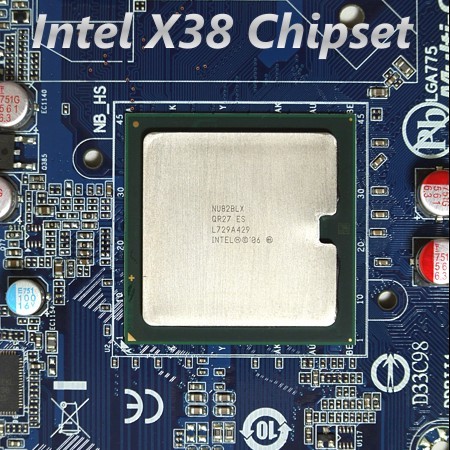X38 Comparison Part 1: DDR2 Motherboards
Introduction
Intel's P35 Express chipset is a tough act to follow, after setting records in both performance and overclocking capabilities. But like the P965 Express it replaced, the long-ago released FSB1333-compatible update was never intended to be an enthusiast part because it wasn't designed for multiple graphics cards. Enthusiasts' choices were restricted to older parts such as the 680i SLI, the ancient 975X or the ill-fated CrossFire Express 3200.
Intel's not one to stand still, so how could it abandon the high-end market for so long? Part of the reason might be its former chipset alliance with graphics company ATI, which resulted in the CrossFire Express 3200 being developed under Intel's blessing but not delivered until after CPU competitor AMD had bought ATI out from under the partnership. The chipset designed to replace the 975X in crossfire-equipped performance systems was thus abandoned by Intel and received little support from motherboard manufacturers.
After many months of waiting, Intel finally released its X38 Express to much fanfare Compare Prices on X38 Express Motherboards, though we were a little skeptical about its role using current technology. The new parts would deliver on promises not filled by the CrossFire Express 3200 by supporting all the technology incorporated in the P35 Express, plus two full-bandwidth PCI-Express x16 slots, which have been further enhanced with next-generation PCI-Express 2.0 transfer-doubling capabilities.
The big hope of enthusiasts was that Intel might reach a licensing agreement with Nvidia for SLI driver support, as the technology has been physically supported by Intel's chipsets since the early days of PCI-Express. This unfortunately wasn't going to happen as it appears Nvidia simply can't compete with Intel on the technology front in the chipset sector, and instead relies on the exclusiveness of "SLI compatibility" to maintain its meager market share. This put Intel in the awkward position of supporting Crossfire instead, even though ATI is now a fully-owned subsidiary of CPU rival AMD. Had Nvidia caved on graphics drivers, Intel would have held all the cards in the dual-graphics chipset game; its components are electronically compatible with both technologies.
No story of such complexity can be detailed on one short webpage, but jumping ahead to the planned X38 release date brings use to a few more problems, most notably that Intel found a minor bug after production began. Revising the silicon after many motherboard manufacturers had already finalized design resulted in several weeks of delays as each company tried to tweak existing products to meet Intel's new specifications. Most manufacturers needed to change the circuit board itself, and a few even cancelled production plans. Today we bring you the only three DDR2-compatible motherboards that could meet our latest deadline, and Part 2 will show what if any performance advantages DDR3 adds to the mix.
Join our discussion on this article!
Get Tom's Hardware's best news and in-depth reviews, straight to your inbox.
Current page: Introduction
Next Page Asus Maximus Formula (Special Edition): Overachiever-
firesteel What happened to this motherboard? I don't see it for sale at places like tigerdirect. Newegg say it's discontinued. Has it been replaced by a newer model or something?Reply


